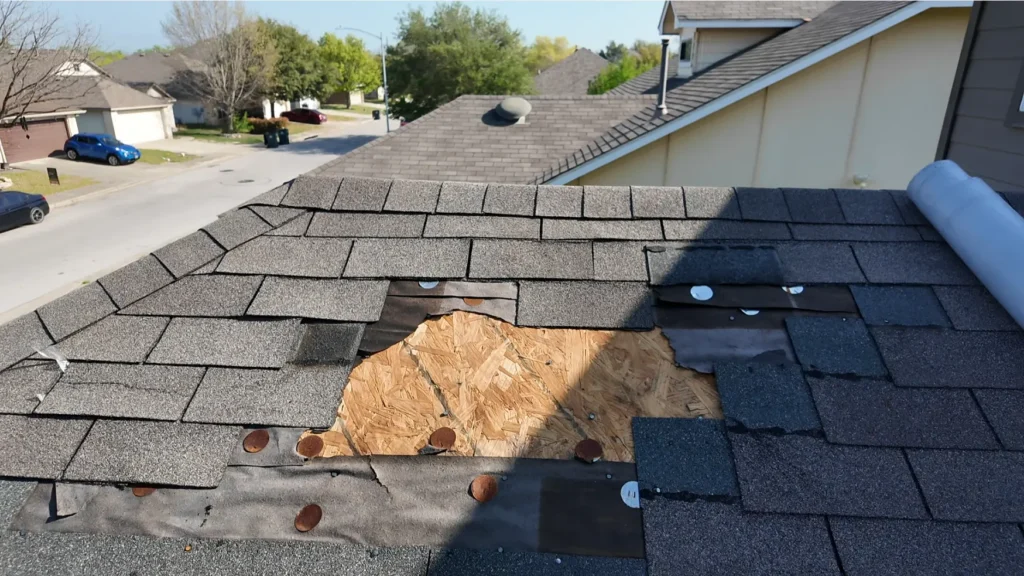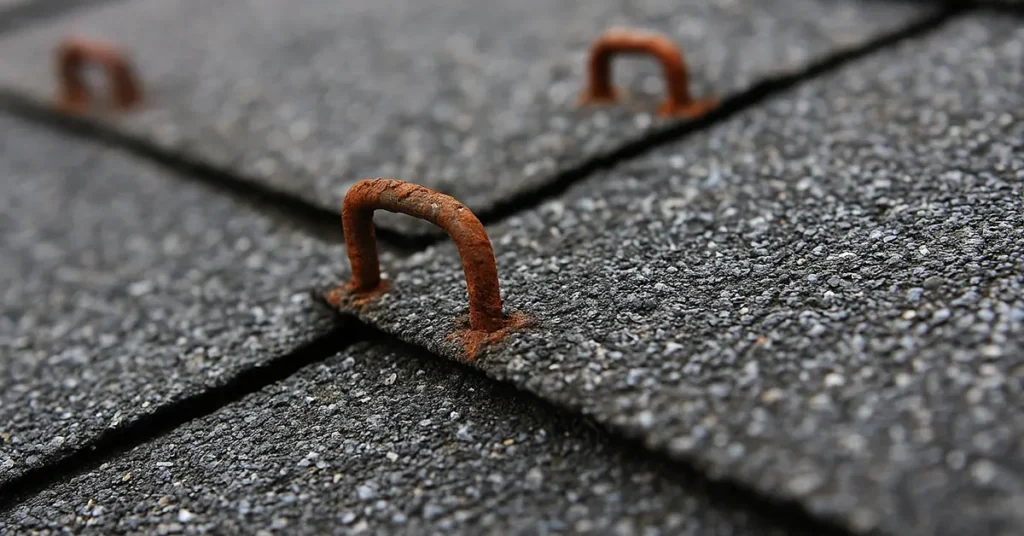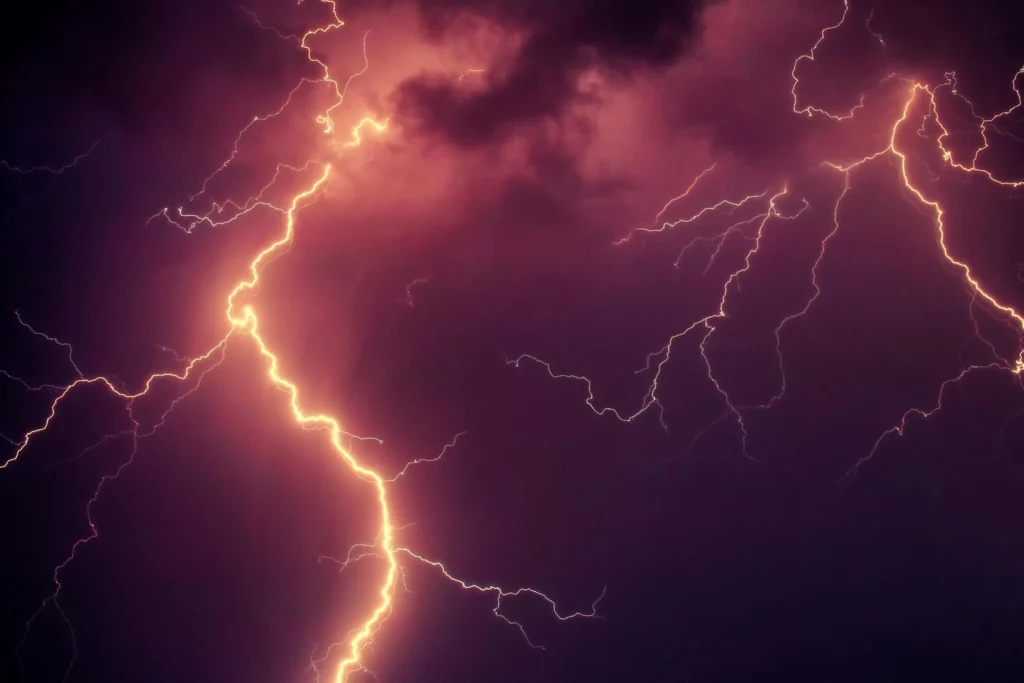There are a thousand reasons a leaky roof repair may be needed. When the sky cracks open and Texas storms roll through, your home’s first line of defense—your roof—takes the hit. And when that roof fails, it doesn’t just mean a mess in the attic. It means soaked insulation, water-stained ceilings, ruined belongings, and a complicated insurance battle.
We recently shared a video from a real storm damage site in Austin, TX (Watch Below). What you’ll see is more than just ripped shingles—it’s the blueprint of how to handle a roof leak the right way, starting with one urgent step: emergency roof tarping.
Let’s walk through what causes a leaky roof after a storm, why tarping matters, and how Texas Roof Damage protects your property—and your claim.
What Causes a Leaky Roof After a Storm?
In Texas, it only takes one gust of wind or an inch of hail to compromise your roof. The most common reasons your roof starts leaking after a storm include:
- Missing or lifted shingles exposing the underlayment
- Cracked or dislodged flashing around vents and chimneys
- Hail impact bruising softening shingles and causing micro-cracks
- Wind-driven rain that exploits weak seals
- Poor installation or previous repairs that don’t hold up under pressure
For more on wind vulnerability and roof systems, see this professional article on assessing wind damage.
Signs Your Roof Is Leaking After a Storm:
- Wet spots on ceilings or walls
- Dripping sounds in the attic
- Insulation that feels damp or moldy
- Water streaks running down interior walls
If you notice any of these, it’s time to act fast.
Why Emergency Roof Tarping Is So Important
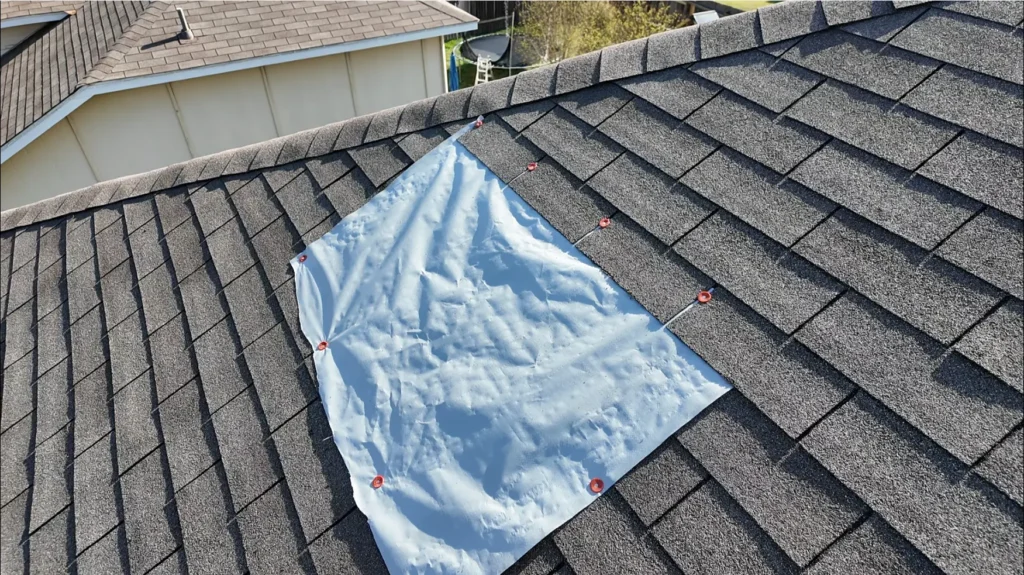
Tarping a roof isn’t just damage control—it’s claim protection.
The second water gets inside, the damage accelerates. But here’s what most homeowners don’t realize: if you don’t tarp your roof and prevent further damage, your insurance company could deny part of your claim.
Tarping shows that you acted in good faith to minimize loss. It proves you took immediate action. And most importantly, it keeps your house dry while you navigate the insurance process.
FEMA has long supported the use of emergency tarps and “blue roofs” as a frontline strategy in preventing further damage. Learn more from FEMA’s article on tarp usage.
What Happens If You Don’t Tarp Your Roof?
- Soaked insulation that molds within days
- Structural damage to wood framing and ceilings
- Compromised electrical systems
- Decreased claim value due to “preventable” damage
Step-by-Step: How Roof Tarping Prevents Water Damage
Tarping isn’t just tossing plastic over your roof. Done right, it includes:
Tarp Placement Techniques That Actually Work:
- Inspection: Identify all damage zones, visible and hidden.
- Tarp sizing: Cut to fit—extra slack creates wind pockets.
- Anchor points: Secured using sandbags or weighted boards (not just nails).
- Overlap edges: To prevent water creep underneath.
- No damage to existing shingles: Proper technique avoids voiding warranties.
Every tarp we install at Texas Roof Damage is paired with photo documentation, proving both damage and proper mitigation.
What Insurance Adjusters Look for After Storm Damage
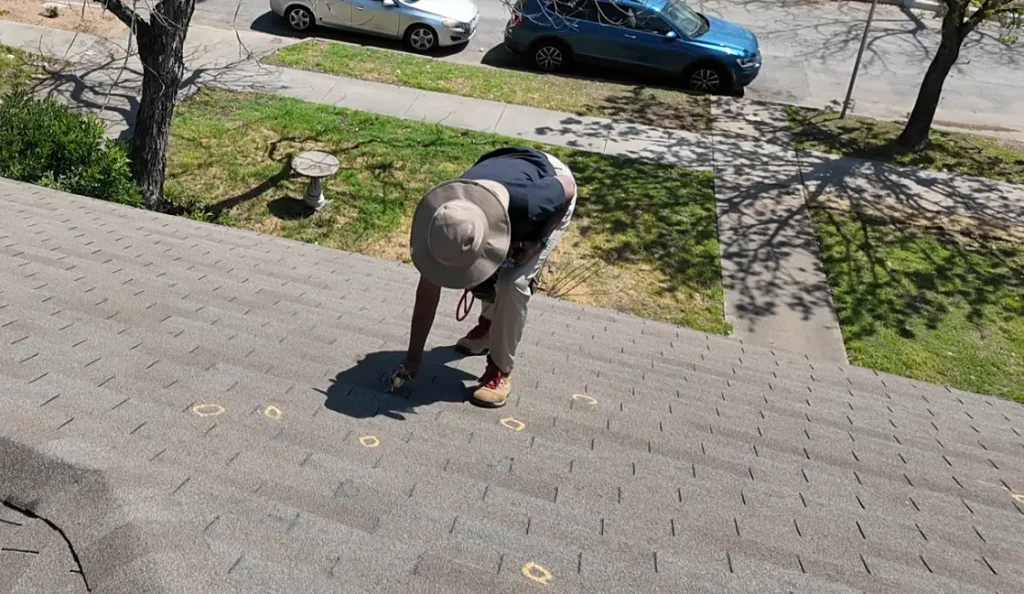
Adjusters aren’t just checking for missing shingles. They’re looking for how you responded.
How Storm Damage Is Evaluated by Insurance Companies:
- Was damage documented with photos/video?
- Were emergency repairs made (e.g., tarping)?
- Did the homeowner prevent additional damage?
- Was the roofer present during inspection to explain?
Texas law requires roofers and insurers to follow strict guidelines when dealing with storm claims. To better understand your rights and obligations, visit this official TDI guide to roofing and insurance.
If you wait too long, or can’t prove your response? You’re at risk of partial denial.
Why You Need a Roofer Present During an Inspection
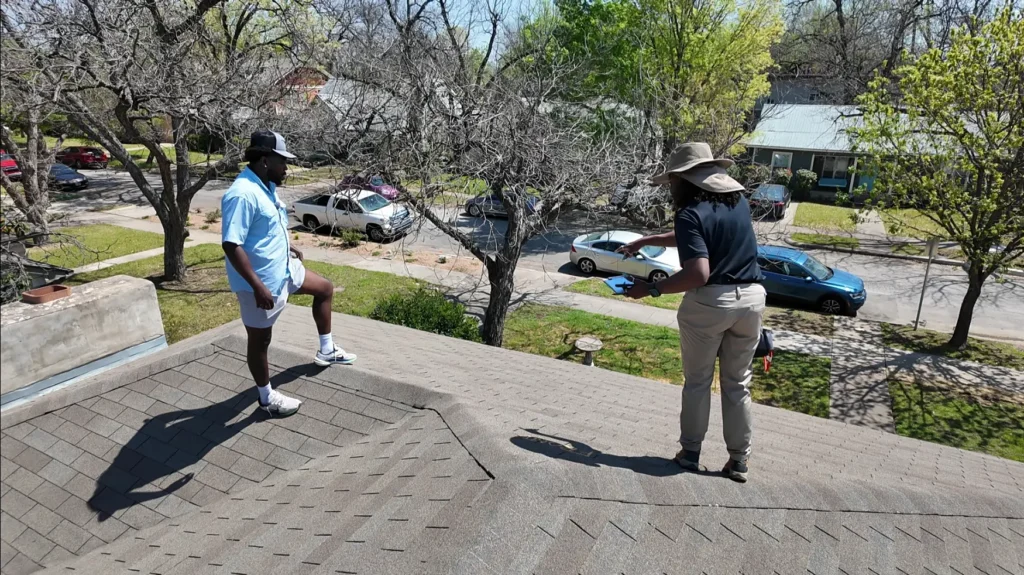
You wouldn’t go to court without a lawyer. Don’t face an adjuster without a roofer.
When Texas Roof Damage meets the adjuster on-site, we:
- Walk the roof together
- Point out damage the adjuster may miss
- Explain why the roof may be non-repairable
- Provide brittle shingle tests and documentation
This collaboration dramatically increases approval odds and helps you get full value for your claim.
Common Mistakes Homeowners Make With Storm Damage Claims
- Calling insurance before calling a roofer
- Skipping documentation before the adjuster arrives
- Delaying tarping and letting water get inside
- Letting insurance adjusters inspect alone
- Not following up on supplemental claims for hidden damage
Avoid these, and you avoid headaches.
The Long-Term Risks of Improper Tarping or Delayed Repairs
Think of tarping like a tourniquet. If done wrong—or too late—the damage spreads.
Long-term risks of poor tarping include:
- Mold infestation
- Structural rot
- Insurance claim denial or underpayment
- Increased labor costs for demolition and drying
Protecting your roof now saves you tens of thousands later.
How to Get a Free Roof Inspection in Texas
If you’ve had a roof leak after a storm, don’t wait. Texas Roof Damage offers:
- Free inspections within 24 hours
- Full photo and video documentation
- Expert tarping and emergency mitigation
- On-site support during adjuster appointments
- Claim help from start to finish
📍 Book Your Free Roof Inspection Now
Need help with insurance? Start here: Texas Department of Insurance
Leaky Roof Repair FAQ
Q: What should I do immediately after my roof starts leaking from a storm?
A: Contact a professional roofer to install an emergency tarp to prevent further damage. Then file an insurance claim as soon as possible.
Q: Does insurance cover emergency roof tarping?
A: Many policies do cover temporary repairs like tarping. A roofer can help you document the damage and provide evidence for your claim.
Q: Can I tarp my roof myself?
A: You can, but it’s dangerous and easy to get wrong. Poor tarp jobs can void insurance coverage or lead to more damage. It’s best left to professionals.
Q: How fast can Texas Roof Damage inspect my home?
A: We offer inspections within 24 hours across Central Texas. You can book yours here: https://texasroofdamage.com/free-inspection
Don’t Wait—Stop the Leak Before It Starts
A leaky roof repair doesn’t start with a hammer. It starts with action. Documentation. Urgency.
If you’ve experienced storm damage in Austin or anywhere in Central Texas, schedule a FREE roof inspection now. Our licensed team will tarp, document, and fight for you—start to finish.

